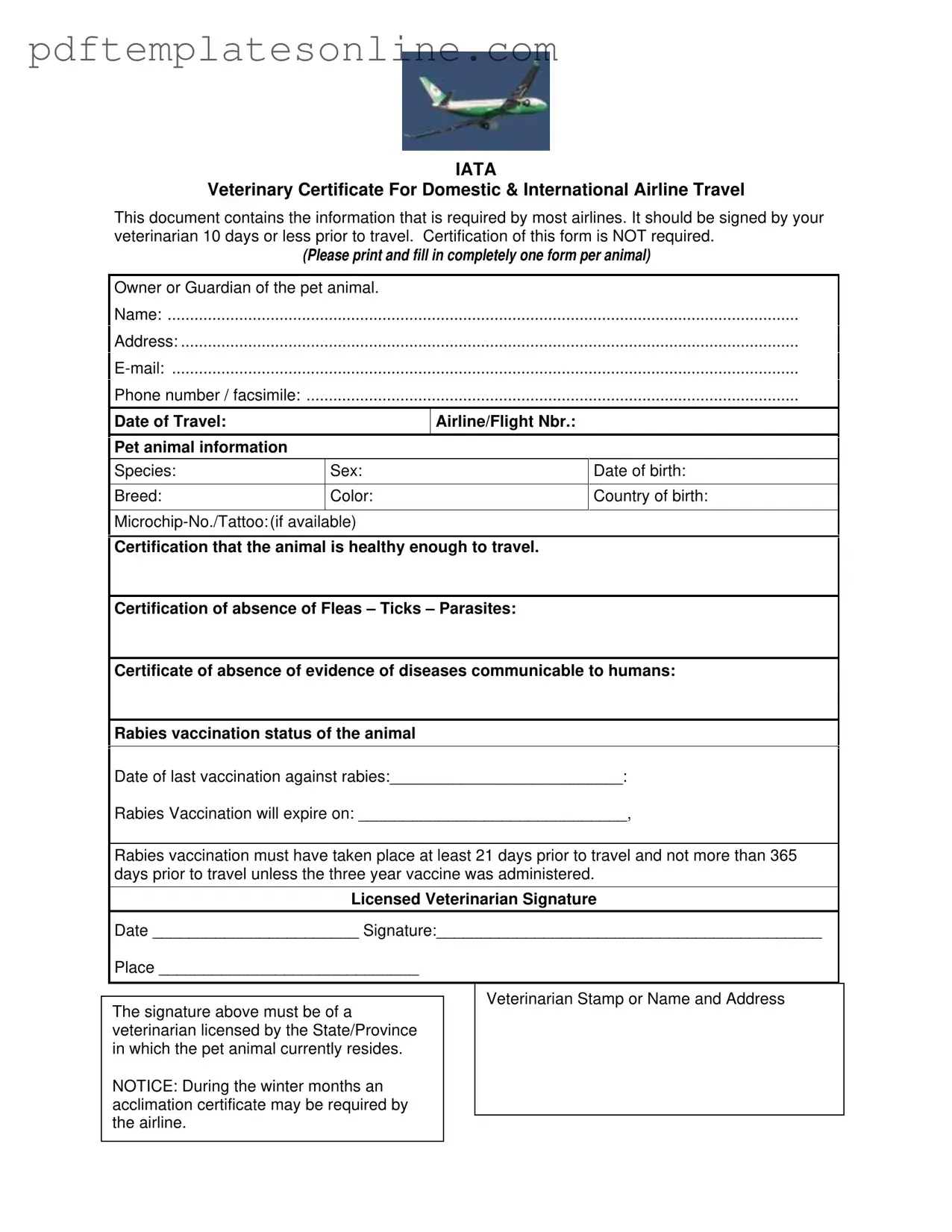Filling out the Veterinary Certificate Travel form accurately is crucial for ensuring a smooth travel experience for you and your pet. However, many people make common mistakes that can lead to complications. Here are six mistakes to avoid.
One frequent error is not providing complete information about the pet. Each section of the form must be filled out thoroughly. For instance, the species, breed, and microchip number are essential details that should not be overlooked. Incomplete information can lead to delays or even denial of travel.
Another mistake involves the timing of the veterinarian’s signature. The form must be signed by a licensed veterinarian within 10 days prior to travel. If the signature is dated too early, the airline may reject the certificate. Always check the date to ensure compliance.
People often neglect to verify the rabies vaccination status of their pet. The form requires the date of the last vaccination and its expiration date. If the vaccination is not current or does not meet the 21-day requirement prior to travel, this can result in serious travel issues. Always confirm that your pet's vaccinations are up to date.
Additionally, failing to include the veterinarian's stamp or contact information is a common oversight. This stamp is vital for validating the certification. Without it, the airline may question the authenticity of the document, causing unnecessary stress.
Another mistake is not checking for the presence of fleas, ticks, or parasites. The form requires a certification stating the absence of these issues. If your pet is found to have any of these, it could lead to travel restrictions or even quarantine.
Lastly, many pet owners forget to keep a copy of the completed form for their records. Having a copy can be invaluable in case of disputes or if additional documentation is required during travel. Always make sure to retain a copy for your peace of mind.
